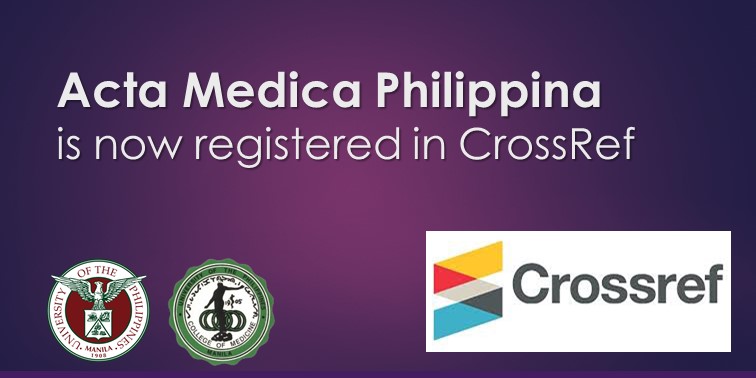Genetic Polymorphisms of Glutathione-S-Transferase P1, T1 and M1 in Pediatric Patients with Acute Lymphocytic Leukemia in a Philippine Tertiary Hospital
DOI:
https://doi.org/10.47895/amp.v42i2.2407Keywords:
Glutathione-S-transferase, Acute lymphocytic leukemia, polymorphic enzymesAbstract
Introduction. Glutathione S-transferases (GSTs) are major detoxifying
enzymes that modify susceptibility in cancers including acute
lymphocytic leukemia (ALL). This paper determines the frequency of
GST polymorphisms (M1, T1, P1) in Filipino ALL patients and control
subjects and compares the frequencies between the two groups.
Methods. Pediatric ALL patients at the UP-PGH Medical Center seen
from January to June 2007 were enrolled. Age and sex matched subjects
without ALL from the UP-PGH Outpatient Department were included
as controls. Genomic DNA was extracted from peripheral blood of
each subject. GSTM1 and T1 polymorphisms were determined using
polymerase chain reaction (PCR) while restriction fragment length
polymorphism (RFLP) analysis was employed for the determination of
GSTP1 polymorphisms. Matched Odds Ratio was used to compare the
genomic frequencies of control and ALL patients.
Results. The presence of GSTT1 and GSTM1 polymorphisms showed a
trend towards protection from having ALL, with OR 0.59 (95% CI: 0.24-
1.36) and OR 0.86 (95% CI: 0.36-2.00), respectively. Having the GSTP1
polymorphism was shown to be a risk factor [OR 1.7 (95% CI: 0.74-
4.15)].
Conclusion. Differences in GST polymorphism frequencies were
noted between the control group and ALL patients. GSTT1 and
GSTM1 polymorphisms appear protective while having the GSTP1
polymorphism confers increased risk for ALL.




.jpg)



